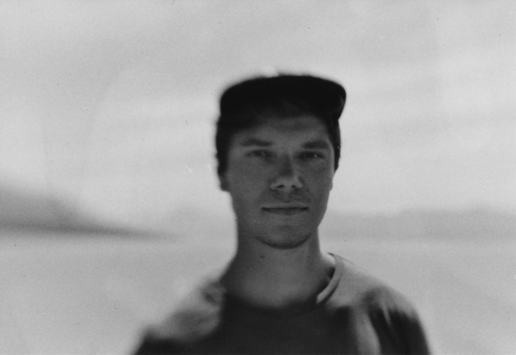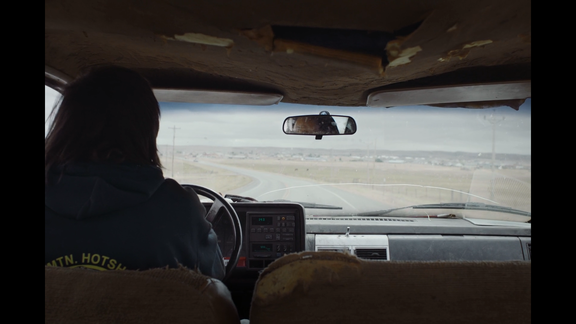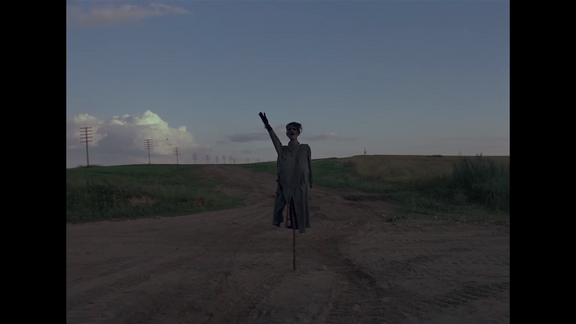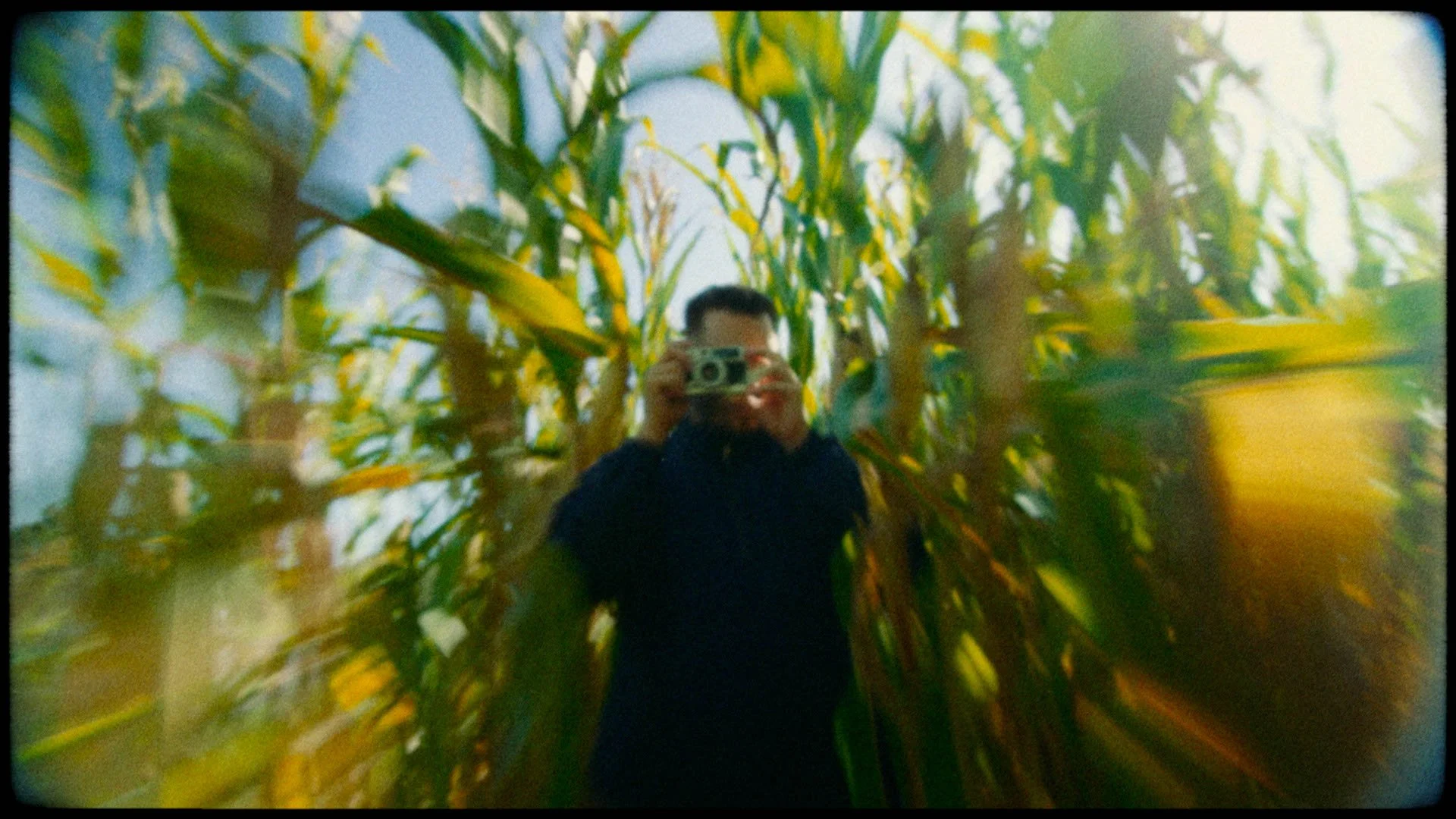Buffalo Runner
Directed by THILO GUNDELACH
United States of America 2021
Documentary, Drama
A short documentary about our shared struggle for identity & self-worth.
Read our interview with Thilo below to learn more about the film.
THILO GUNDELACH
Est. Reading Time: 9 Minutes
MARK (M) Tell us a little about yourself - when did you become interested in film and filmmaking?
THILO (T) I was born in 1988 in a small village in the South of Germany. Growing up playing soccer, the area gained internet access in my teens. We started a post-rock band. It felt great and I thought that was it, but by the end of school we slowly lost ourselves over the question of how to move on. I enrolled for a B.A. in Media and Communication and over time we stopped making music. I felt a growing emptiness.
During an internship, I got the chance to do a short event video. I had no real clue (what I was doing) but I worked myself into it and they liked it. That was my first contact with filmmaking or camera work at all and I felt the same energy of ‘being in the moment’ I felt with the band. I was hooked and got myself one of the early video DSLRs to shoot a small project for university, which was a corporate film for a soft drink manufacturer. I did everything including the music and again they liked it. I was paid good money and felt this was great. The company asked me to do some behind-the-scenes camera work on one of their commercials and I could watch the director do his work. One year later I enrolled at Filmakademie Baden-Wuerttemberg to chase the idea of becoming a commercial director as I was sure its great fun and pays well.
Until very recently I thought (or better wished) of that to be enough. But as someone much smarter than me once said - 'it is only with the heart that one can see rightly’. I came to understand that I want my work to have truth in it. But to do so it must come from the truth and so far I was too scared to use my own voice. In 2015 my girlfriend and I went for a year of travelling and at one point we found ourselves on the Blackfeet Indian Reservation in Browning, MT, where I met Douglas Fitzgerald, a Native American Cowboy. That idea of a Native American being a cowboy seemed so paradoxical to me (growing up watching all these stereotypical Western movies) that I came back one year later to do a short film about him. Looking back that for me was when I became interested in filmmaking as I understand it now - an art to connect with others.
M Why are you interested in specifically focusing on identity and place within your films - where do you think this inspiration and instinct comes from?
T Our lives are determined by what surrounds us, the world we are born into and socialized by. The Native American cowboy is a good example as this lifestyle emerged out of two very different cultures clashing in one place. A person of Native American descent tries to find purpose in a world which is now dominated by cowboy culture. That creates inter-dependencies - I am as much a product of my surroundings as I make an impact.
T According to Erich Fromm (one of my heroes - read his book ‘To Have or To Be?’) the problem with most of us in the industrialized world is that we are or let’s say become what we have (our job, experiences, abilities) and our perceived identity or so-called self (especially self-esteem) depends on this notion rather than who we actually are. If we HAVE not enough, we feel we are not enough, which so often leads to fear and self-hate. But if we manage to use the tools around us without clinging to anything, if we overcome our self-centeredness and EGO to just BE, we will fall in love with life. This of course is an ideal. But this is what I look for - telling stories and finding people who walk this path. And as people act (which for me is always an interaction with our surrounding), they become visible and film is the most perfect medium to capture it and help us explore the human condition.
I cannot say where this comes from. I just realized that about myself by asking ‘why, why do I do things? why do I go and spend so much time with Native Americans?’ And by reflecting about my work I feel identity and place are the common denominators.
On Duane’s Story
M Why were you interested in telling Duane's story - can you tell us about how you met and got to share his story?
T I met Duane in 2017 while working on that aforementioned short film about the Native American Cowboy Swift Current during the Native American Indian Days festival in Browning, MT. We were filming a rodeo event and they had Indian Relay races. Duane was competing with a team of a friend. He just walked over to us and said hi. He was interested in our camera and wondered what we were doing there. We talked a little and as he was involved with Indian Relay, an insane spectator sport I was curious to learn more about, I asked for his email. We stayed in touch and exactly one year later Leo Kaufmann (DoP) and I decided to visit him in the hopes to make a short film about Indian Relay.
T We managed to borrow a camera and planned to stay for about two weeks. There was no concept really, just an immense curiosity about the sport. When we arrived we had to ask around town for Duane’s home as we didn’t have any address and only rough directions. I remember when we finally arrived at his place. It was already dark and he opened the door wearing some kind of pajamas. I will never forget how he asked with a dark voice who we are and what we want. He knew we were coming but I guess he only believed that we are for real the moment I answered “it’s the Germans”. We pitched our tent in his yard and in the morning his two little boys Winni-Mo and Kru brought coffee.
The next days he introduced us to a lot of people. We got to meet the ‘heroes’ and followed Duane to an Indian Relay race. We drove hundreds of miles with this father of eight and spend a lot of time with his family. We tried really hard to come up with a concept. But after 10 days in the country we realized we had nothing - only nice impressions of the Blackfeet country and some nice shots like the slow-motion rider dashing by, but no story. The heroes were nice to look at but I guess it is the same with every professional sport, they honestly tend to be a bit flat and there were no more races to film.
T So we were devastated but I was not willing to give up. Then we realized that we forgot the camera batteries at the racetrack we just returned from. We drove the whole night and luckily the batteries were still there, but I still felt we wouldn’t have any film. I remember that I parked the car on the side of the road to get some sleep. After a few hours I drove and we arrived in the Blackfeet country right before sunset. I remember that serenity, that calm yet magnificent beauty. That day I learned to let go and that very night Duane opened up to us about his dark past, about his hopes and how he blames himself. I was stunned and asked him to sit with us for an interview. We drove out on a little hill overlooking the prairie and stayed there for about three hours just sitting and talking - now we had our story. The last two days we managed to get most of the shots I felt necessary to make a film with what Duane gave us, including the part with his son Cliff and their horse ‘The Man’. I somehow had a very good, very distinct feeling yet I was unable to articulate it.
‘Your wound may not be your fault, but your healing is your responsibility’
— Duane Kemmer
On Inspiration
M What are some of the films and who are some of the filmmakers that inspire you, and why?
T Well I really like Paul Thomas Anderson - especially There Will Be Blood (2007) and The Master (2012) - again explorations of identity and the human condition. His films give you a world and a chance to witness the birth and decay of character. I feel they are timeless and I am a big fan of PTA’s style and taste.
There Will Be Blood (2007) by Paul Thomas Anderson
T Come and See (1985) is a mind-blowing masterpiece - a tour de force that’s so utterly cruel yet beautiful. For me it renders war like nothing else. A constant overload which is so alive in this movie that it won’t leave you unchanged. By creating such a dystopia it indicates what can be, what should be and leaves you with an ideal - to end all wars. This for me is the art of film. It can bring us in touch with ourselves, remind us of our own responsibility and ultimately ask the question what to do with our limited time on Earth.
Right now I am studying the works of Andrei Tarkovsky, whose ethics and convictions regarding the art of filmmaking I deeply resonate with (read his book ‘Sculpting in Time’). I highly recommend learning about his philosophy in which I find great fortitude and poise.
Come and See (1985) by Elim Klimov
On The Future
M What are you planning to make next?
T I just completed work on my first feature length screenplay The Mugger - I am trying to figure out the next steps (funding, timing, collaborations). It’s based on my experience with Duane and the insight I was granted by visiting the Blackfeet. Buffalo Runner was pretty much the starting point and the story I wrote within the last year can best be described as a redemption plot in which a penitent father starts a horse racing team (Indian Relay) on an Indian reservation to stop his estranged son from taking revenge for the murder of his best friend. I would love to work with Duane as the main protagonist. To me he is a natural actor and most of the story touches on events he experienced, yet it will be his first time shooting a feature film. Therefore we wish to cast Native American actors for the key supporting roles and channel that explosive energy to create memorable performances. So that journey has just begun.
Mark’s Final Thoughts
I was so inspired reading Thilo’s answers - you can really feel his honesty and sincerity so it’s no surprise that he was able to gain the trust of Duane and his family. The fact that Thilo was able to ingrain himself so dearly and deeply within a completely different community and part of the world says so much about his character.
The Mugger sounds very interesting and made me think about Chloe Zhao’s first feature film Songs My Brothers Taught Me (2015), which is a beautiful Native American drama - highly recommend everyone to watch it. And of course, I absolutely recommend PTA, Tarkovsky and Come and See (1985).
Want to Learn More? Click here for Thilo’s insights into designing the film’s visual style as well as learning to trust his gut on set.
The founder of Hommage, Mark Shaba published this interview on 11.09.2021. Mark is a filmmaker from Victoria, Australia. He respectfully acknowledges the past and present traditional owners of the land on which he creates, promotes and screens art, the Wurundjeri people of the Kulin nation who are the custodians.





















